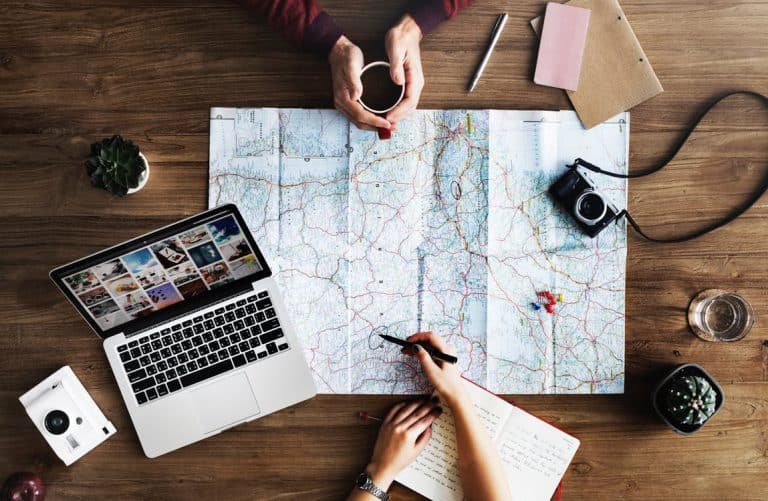When does the customer experience begin for today’s modern traveler? Here’s a hint: It’s long before the check-in time at their hotel and months before they attempt to cram two weeks’ worth of clothes into a carry-on bag. Today’s travelers are more connected than ever – to their phones, to each other, to their destinations. Brands now have an opportunity to form a deeper connection with consumers earlier in their purchase journey, enabling a more individualized travel experience. Here are six tips for mastering travel marketing in the modern world.

Optimize Traveler Data
Customers interact with dozens, if not hundreds, of sites, channels and platforms while planning and taking a trip. In fact, Hospitality Trends reported that Nielsen research for Google found that travelers spent an average of 53 days visiting 28 different websites over a period of 76 online sessions, with more than 50% of travelers checking social media for travel tips. What initially seemed like a clear-cut path to your consumer can become overgrown rather quickly. Especially when you layer in traveler types and occasion-based segmentation.
For this reason, brands should have a partner who is versed in data analysis and customer insights. Once you know when, where and how a customer is interacting with your brand, data can be optimized and made actionable by delivering engaging content that caters to your customers’ unique needs.
Harness the Power of Mobile
For today’s traveler, their next adventure is literally in the palm of their hand. According to Google Smarthink Insights, 40% of unique page visits to U.S. travel sites and 60% of destination information searches now come from mobile devices.
Whether travelers are using their phones to book a last-minute hotel, hailing an Uber car after touching down in a new city or browsing Yelp to find that great little hole-in-the-wall restaurant only the locals know about, it’s important that your brand is there for these moments with relevant content and on-demand functionality.
According to Google, 77% of people claim to use their smartphones for travel inspiration in their spare time – e.g., waiting, commuting, watching television, eating, etc. When customers are dreaming about travel, they haven’t committed to a date, destination or brand. The question then becomes how to use mobile to connect with a customer who doesn’t know what they want yet.
Utilize Multi-Media Channels
Travel businesses need multi-media channels like lazy Sundays need Netflix. According to Statista, by 2019, the online travel industry is forecasted to grow to 762 billion U.S. dollars. There is no question that today’s travelers desire the convenience and expediency of digital platforms and rarely utilize just one channel. According to Nielsen Research, the digital travel space worldwide will expand at an annual rate of 3.8% to reach $11.4 trillion. To reach potential visitors, brands must cast a wide net by not only utilizing traditional marketing but also keeping up with the latest market trends in SEO, UX and social media marketing.
Time for a Virtual Reality Check
Speaking of multi-media channels, travel marketing is an ideal space for utilizing modern mediums, such as virtual reality or 360 video. And when you are competing for a consumer’s attention in a very saturated market, it helps to stand out from the crowd. Even with today’s high-definition digital technology, 2D images rarely do travel destinations justice. Virtual reality gives potential travelers the opportunity to be immersed in the sights and sounds of travel destinations and better evaluate if the destination fits their needs. In fact, internal research at YouVisit has shown that 13% of people who experience a vacation in VR go on to either book a trip or get in contact with lodging or transportation companies.

Social Media Is a Must
In case you weren’t already aware, social media is a MUST for any successful marketing campaign. Instagram, for example, is one of the world’s largest and most active social platforms, with 700 million total active users. According to The State of Social Marketing 2017 Annual Report, 33.6% of marketers are now spending advertising dollars on Instagram, and that’s just Instagram. Facebook is quickly approaching 2 billion users, with 90.3% of marketers spending the majority of their social advertising dollars on Facebook.
But the days of sharing a Facebook post linking to an outdated landing page are over, especially for travel brands. Generation Y is the first generation to have spent their entire lives in a digital environment, they are the largest living generation in the U.S. and by 2017, they’ll carry the majority of the spending power. Your brand must meet their dynamically digital and immediate purchase patterns, or it will not be able to keep up with its competitors.
Incorporate Influencer Marketing
One study revealed that 84% of millennials and 73% of non-millennials are likely or very likely to plan a trip based on someone else’s vacation photos or social media updates. Most millennials aren’t loyal to any one travel brand or company and, regardless of age, consumers respond better to content coming from a relatable personality rather than a brand. For these reasons, influencer marketing has proved to be a successful strategy for many travel brands.
Take Notes From the Industry Disrupters
Spoiler alert: Simply talking about your brand on social media doesn’t intrigue the modern traveler. Airbnb is a great example of a brand that understands who its customers are and how to fuel their curiosity and passion for new places and cultures. Airbnb is one of the most active travel brands on YouTube, producing and sharing high-quality video content. The company empowers its guests and hosts to tell the Airbnb brand story, which is shared through millions of posts and pictures each day. On Instagram alone, it has more than 2.3 million followers. Behind the scenes, there is an elegant marketing machine at work, but from the customer perspective, Airbnb content is very relatable and authentic.

Curious as to how we approach travel marketing? Click here or follow us on Facebook, Twitter or Instagram for more.







